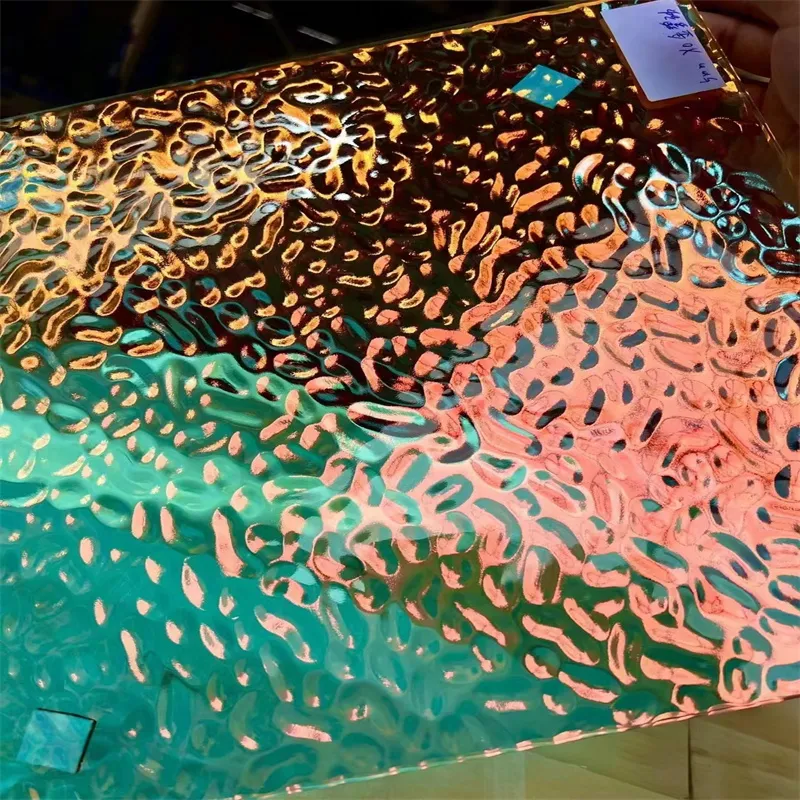Nov . 30, 2024 01:12 Back to list
Laminated Mirror Glass for Enhanced Safety and Aesthetic Appeal in Modern Interiors
The Elegance and Utility of Laminated Mirror Glass
Laminated mirror glass is an innovative and versatile product that combines functionality with aesthetic appeal. It has gained popularity across various industries, including architecture, interior design, and automotive manufacturing, due to its unique properties and numerous advantages. In this article, we will explore the characteristics, applications, benefits, and considerations surrounding laminated mirror glass.
What is Laminated Mirror Glass?
Laminated mirror glass consists of two or more layers of glass that are bonded together with a transparent interlayer, often made from polyvinyl butyral (PVB) or ethylene-vinyl acetate (EVA). This process not only enhances the strength and durability of the glass but also allows for the production of a reflective surface that retains excellent visual qualities. The mirror finish is achieved through a silvering process, which provides a highly reflective layer on one side of the glass.
Characteristics of Laminated Mirror Glass
1. Safety and Security One of the most significant advantages of laminated mirror glass is its inherent safety features. If broken, the glass fragments are held together by the interlayer, reducing the risk of injury from sharp shards. This makes it an ideal choice for environments where safety is paramount, such as schools, hospitals, and commercial spaces.
2. Sound Insulation The laminated structure of this glass also provides superior sound insulation properties compared to regular mirror glass. This makes it an excellent option for settings where noise reduction is important, such as offices, recording studios, and residential spaces near busy streets.
3. UV Protection The interlayer in laminated mirror glass can block a significant portion of ultraviolet (UV) radiation, helping to protect interiors from fading and damage caused by sun exposure. This makes it a practical choice for furniture, artwork, and flooring that are sensitive to UV light.
4. Customization Laminated mirror glass can be customized in various ways, such as thickness, color, and the type of interlayer used. This makes it adaptable to numerous design requirements and preferences, allowing architects and designers to create unique and innovative spaces.
Applications of Laminated Mirror Glass
Laminated mirror glass is used in a variety of applications, including
- Architectural Design In building facades, it adds a modern touch while enhancing energy efficiency by reflecting sunlight. It is often used in high-rise buildings to create stunning visual effects and a sleek aesthetic.
laminated mirror glass

- Interior Design In homes and commercial spaces, laminated mirror glass can be incorporated into furniture, decorative elements, and wall coverings, contributing to an elegant atmosphere while providing practical benefits
.- Automotive Industry This glass type is increasingly used in vehicles, where safety and noise reduction are crucial. It can be found in rearview mirrors as well as side windows, enhancing both functionality and design.
- Retail Environments Retailers often use laminated mirror glass to create eye-catching displays and innovative store layouts. Its reflective qualities can enhance marketing strategies by making products stand out.
Benefits of Using Laminated Mirror Glass
The use of laminated mirror glass offers several benefits
- Enhanced Safety As mentioned earlier, the structural integrity of laminated glass ensures that it remains intact even when cracked.
- Increased Durability Laminated mirror glass is more resistant to impacts, making it suitable for high-traffic areas.
- Easy Maintenance The smooth reflective surface of laminated glass is easier to clean and maintain than other materials, ensuring that it retains its aesthetic appeal over time.
- Energy Efficiency Properly utilized laminated mirror glass can contribute to energy savings by minimizing the need for artificial lighting and reducing heat gain in buildings.
Considerations in Choosing Laminated Mirror Glass
When considering laminated mirror glass for a project, it’s essential to evaluate factors such as thickness, clarity, and the specific properties of the interlayer. Working with experienced suppliers and manufacturers can help ensure that you select the best type of laminated mirror glass to meet your requirements.
In conclusion, laminated mirror glass represents a blend of elegance, safety, and functionality. It is a material that not only enhances the visual appeal of spaces but also provides significant practical advantages. As technology advances, it is likely that laminate mirror glass will continue to evolve, showcasing even more exciting applications in various fields. Whether for architecture, design, or automotive use, this versatile material is transforming our surroundings in meaningful ways.
-
Safety and Style with Premium Laminated Glass Solutions
NewsJun.24,2025
-
Reinvents Security with Premium Wired Glass
NewsJun.24,2025
-
Premium Float Glass Line for Modern Architecture
NewsJun.24,2025
-
Low Emissivity Glass for Energy-Efficient Architecture
NewsJun.24,2025
-
High-Performance Insulated Glass Solutions for Modern Architecture
NewsJun.24,2025
-
Elevates Interior Style with Premium Silver Mirror
NewsJun.24,2025
Related PRODUCTS














